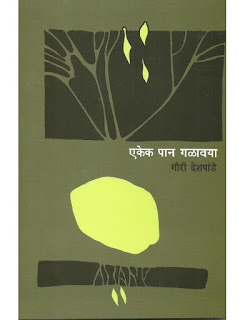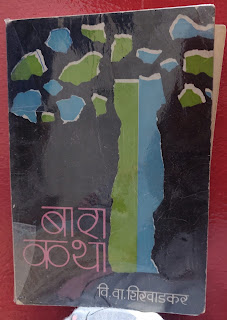What Should and Shouldn't I Microwave?
Originally Posted By : http://www.lifehacker.co.in/Lifehacker/What-Should-and-Shouldnt-I-Microwave/articleshow/31121367.cms
Dear Lifehacker,
I heard it's dangerous to microwave food in plastic containers or plastic wrap because of scary food-contaminating chemicals. Is that true? What other things are safe or unsafe to use in the microwave?
Signed,I heard it's dangerous to microwave food in plastic containers or plastic wrap because of scary food-contaminating chemicals. Is that true? What other things are safe or unsafe to use in the microwave?
Nervous Nuking
Dear Nervous,
The microwave is a powerful appliance, and with that power comes great potential for harm-things like sparks or explosions and, yes, possible toxins leaching into your foods. Don't worry, though, your microwave most likely won't kill you. Just heed these do's, don'ts, and other recommendations for safe microwave cooking.
Containers
Do
- Glass containers. These are probably the best to use, since there's zero debate about how safe they are in the microwave
- Most paper plates, towels, and napkins. However, because some paper towels are made with plastics and some paper plates and cups are coated with plastic, National Sanitation Foundation (NSF) International recommends only using those products marked as microwave-safe
- Ceramics, although Ceramics Today recommends only porcelain and stoneware, rather than ceramic dishes that may have been low fired, because those could possibly explode; their article offers a test to figure out if a piece would be safe to microwave (if you knock on it and it has a clean ring, it's probably fine). Plates with metallic paint can also cause sparks
- Wax and parchment paper, as well as microwave cooking bags are deemed fine too, according to NSF International
- Aluminum foil. Technically, you can use foil in the microwave (fun fact: Hot Pockets microwaveable containers and similar foods have aluminum lining), but it might not be the wisest thing to do
- Metal containers (e.g., canned foods in their cans), for the same reason above
- Brown paper bags from the grocery store. Per the USDA: "They are not sanitary, may cause a fire, and can emit toxic fumes. Intense heat may cause a bag to ignite, causing a fire in the oven... . The ink, glue, and recycled materials in paper bags can emit toxic fumes when they are exposed to heat. Instead, use purchased oven cooking bags"
- One-time storage containers like take-out containers, margarine tubs, or yogurt containers
- Plastic trash bags, garbage cans, or film canisters. I had no idea people consider these cooking vessels, but nevertheless the University of Nebraska warns against using these items for microwave cooking
- Plastics. This is the big one people fear cause cancer. Even BPA-free products leach hormone-like chemicals (although new research suggests it might not be as bad as previously thought). The jury's still out, though, on the health implications of microwaving or dishwashing plastics. The Environmental Working Group advises against microwaving foods or drinks in any kind of plastic container at all. The FDA, however, approves containers for microwave use based on their measures of the chemicals leaching out; as Harvard Health reports: "The maximum allowable amount is 100-1,000 times less per pound of body weight than the amount shown to harm laboratory animals over a lifetime of use. Only containers that pass this test can display a microwave-safe icon, the words "microwave safe," or words to the effect that they're approved for use in microwave ovens."
- Styrofoam. Similarly, some Styrofoam products are marked "microwave safe"
- If you do decide to microwave in plastic containers, just make sure they're not cracked, old, or discolored . And when covering food with plastic wrap, make sure the plastic doesn't touch the food.
Foods and Drinks
Do
- Bacon, preferably with an upside down bowl
- Frozen pizza
- Eggs, scrambled or poached
- Kale , for a healthier alternative to potato chips
- Or potato chips
- Lemons and limes, to get more juice out of them
- Popcorn in a bowl
- Vegetables, especially eggplant
- Desserts like sponge cake and brownies
- Pretty much anything else except the items below
- Grapes. Apparently they can burst into flame and turn into a glowing ball of plasma gas
- Eggs intact in their shells or boiled eggs. The problem, WebMD reports, is the pressure builds up in the sealed egg "container," which can cause it to explode (even if the boiled egg is peeled). Best to pierce the egg in multiple spots before nuking
- Dried hot peppers. About.com's Chemistry site notes that the capsaicin chemical in peppers is volatile and can catch fire. "Don't microwave any chemical you wouldn't want released into the air. Don't microwave dry materials."
- Take care when boiling water in the microwave, because it can be "super-heated" and possibly explode. A chopstick or other stick in the cup would prevent this
- As with the eggs, cut or prick items that may be more likely to explode because of internal pressure, such as hot dogs, sausages, and potatoes. Also make sure you vent any container so steam can escape
Other Objects
Do
- Wet sponge, to disinfect it. Make sure you squeeze out the dishwashing soap first
- Potting soil, to sterilize it, especially good for starting seeds
- Dish towels in a zip lock bag for a DIY hot water bottle
- DIY heat bag (fill with rice, beans, etc.). You can also just fill a sock with these things
- Beauty products. Real Simple notes you can briefly warm up products like hot-oil conditioners, hot wax for removing hair, and even facial masks
- Water with lemon. It actually cleans your microwave
- Dry sponge, which can catch fire
- Pretty much anything that's been done on the Is It a Good Idea to Microwave This? show (videos and wiki here). The microwave specialists tested hundreds of items, including talking greeting cards, firecrackers, spray paint, Pikachu (the doll), and a propane tank. These usually resulted in melting, flames, sparks, and smoke
- Living things. Enough said
- Soap. Well, this is really only debatable if you don't want to be amazed or waste a bar of soap
- CDs. Sometimes you might just want to see a light show or destroy a CD
Lifehacker
Photos by Oleksiy Mark (Shutterstock), State Farm, JoshuaDavisPhotography.



Comments
Post a Comment